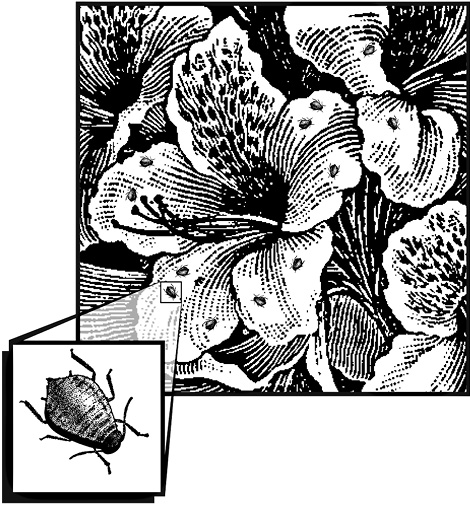Energy Defined
Protein, carbohydrates, and fats provide energy in beef cattle diets. Energy is often referred to as digestible energy, net energy for maintenance (NEm), net energy for gain (NEg), net energy for lactation (NEl), and total digestible nutrients (TDN). On forage and feed quality analysis test results, digestible energy in Mississippi beef cattle diets is most commonly expressed as TDN. For practical purposes of ration balancing and determining energy supplementation needs on forage-based diets, TDN is a key value to consider.
Fire ants interfere with commercial fruit, nut, and vegetable production in several ways. Sometimes they damage plants directly by eating the germ from newly planted seeds, by feeding on okra or other fruits, or by feeding on the inner bark of young trees. The mounds can physically interfere with management operations and even damage equipment, and fire ants readily nest in organic mulch, under plastic mulch, around irrigation equipment, and near the bases of trees.
Fire ants thrive in Mississippi pastures and hayfields because these habitats are similar to the pampas in their native lands of Brazil and Argentina. It is no fun to haul hay bales from a fire ant-infested field, and the mounds can interfere with mowing and even damage equipment.
While energy and protein are often the major focus of many beef cattle nutritional programs, fiber is another essential diet component beef cattle producers need to consider. Fiber type, quality, and length impact cattle health and productivity. Fiber is typically coarse and less dense than other feedstuff components, and the positive effects of feedstuffs on rumen health are related to their fiber content.
Selecting and developing beef heifers to replace culled cows or increase herd numbers impacts the economics of a cow-calf operation through genetics and longevity. Improved genetics can enhance growth performance and carcass value while eventual longevity of the heifer as a mature cow is influenced by reproductive success during the first breeding season.

Catfish farmers, waterfowl biologists, and duck hunters have known since the 1970s that catfish ponds in the Mississippi Delta attract tens of thousands of ducks and other waterbirds annually. Mississippi State University (MSU) wildlife scientists conducted aerial surveys of ducks throughout the Delta, including surveys of catfish ponds during winters 2002 through 2004. They found more than 105,000 acres of catfish ponds in the Delta attracted an average of more than 110,000 ducks in winter. That’s more than a duck per acre of catfish pond.
Market Lamb Selection
Market lambs provide an excellent project for 4-H youth to learn about being responsible for animals. Along the way, they learn more about the sheep industry and agriculture in general. The market lamb project teaches how to own and work with lambs; how to take responsibility for lambs’ health, care, and growth; and how to win or lose competitions gracefully. These are important life lessons that will serve a 4-H’er even as an adult.
We have tens of thousands of different species of insects and mites in Mississippi. Only a tiny percentage of these are pests of ornamental plants, and even fewer attack roses. Still, there are some insects and mites that cause serious problems for rose growers. Being able to identify these pests and distinguish them from non-pest species is the first step in control.
Tall fescue (Festuca arundinacea Schreb.) is a cool-season perennial grass that grows well in north Mississippi. It provides excellent forage in the spring and fall. Tall fescue is drought tolerant and resistant to diseases like brown patch, dollar spot, leaf spot, and others common to forage grasses.
